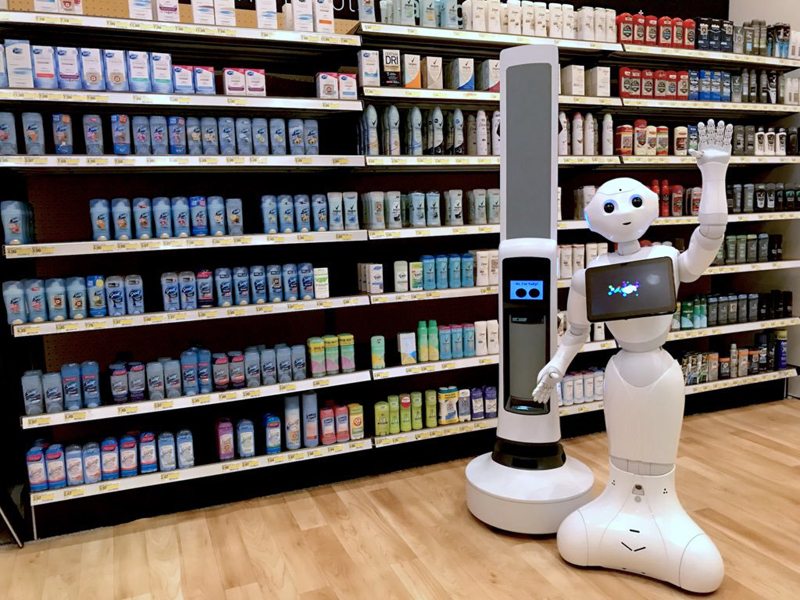Increased productivity and efficiency
One of the major ways robots are transforming retail is by improving productivity and operational efficiency. Robots are capable of performing repetitive and physically demanding tasks much faster and accurately than humans. They can assist with restocking shelves, sorting inventory, moving boxes and other goods around warehouses and stores. This allows retailers to streamline workflows, reduce errors and spend less time on mundane manual jobs. By leveraging robots, retailers are able to increase output while reducing costs. Several major retailers have deployed robots for tasks like inventory checks and warehouse order fulfillment. This has led to significant savings in labor costs and higher profit margins.
Personalized customer experiences
With advances in artificial intelligence and computer vision, robots are now able to interact with customers by providing personalized recommendations, answering questions and helping shoppers find products. Some retailers are pilot testing robots as in-store assistants that can guide customers to specific aisles, locate out-of-stock items and suggest complementary products. Shoppers can have natural conversations with these Retail Robots through voice commands or touchscreens. They also enhance the shopping experience for customers with disabilities or language barriers. As robots gain more sophisticated capabilities, retailers will be able to deliver highly customized experiences tailored to individual customer preferences and needs at scale.
Omnichannel fulfillment
The growing demand for fast, convenient fulfilment across online and in-store shopping has made omnichannel a top priority for retailers. Robots play a vital role in streamlining order processing and fulfillment across different sales channels. In warehouses, autonomous mobile robots (AMRs) rapidly pick, pack and transport products for shipments, driving much higher throughputs. For buy-online-pickup-in-store (BOPIS) orders, robots sort and route items to be picked up at the retail location. They also assist with in-store inventory checks and replenishment. This helps retailers provide a seamless purchasing experience to customers whether they shop online or in physical stores. The implementation of robotics ensures fulfillment centers and stores operate as synchronized hubs to meet omnichannel demands.
Inventory management and planogram compliance
Managing vast product assortments and ensuring planogram compliance across multiple stores has traditionally been a laborious task for retailers. Robotics is transforming this process by automating inventory counts, replenishment and layout audits. Mobile robots equipped with computer vision navigate aisles and instantly scan shelf tags and products to verify on-hand quantities and placements. Any inconsistencies with planned planograms are automatically flagged. This enables real-time, accurate inventory visibility. Retailers no longer have to rely on manual audits but instead get continuous oversight of planogram adherence across their entire store network. The insights also support just-in-time replenishment from distribution centers to optimize stock levels.
Safety and cleanliness
Robots can take over jobs that are unsafe for human employees, especially those dealing with heavy lifting or repetitive strain tasks. This improves workplace safety standards. Their use also minimizes risks during hazardous situations like the current pandemic. Autonomous floor scrubbers, for instance, help maintain hygiene by disinfecting retail spaces without exposing cleaners. Robotic carts equipped with UV-C lights autonomously sanitize high-touch surfaces. Areas where robots have been deployed show significantly lower contamination risks compared to manual cleaning processes. This reassures customers and employees as retailers navigate health crises. Retail chains are actively exploring robotics solutions that can enhance safety, sanitation and create a safer in-store environment.
Cost control and optimization
Labor typically accounts for a major portion of operating expenses for retail businesses. By automating roles suited for robots, retailers gain tighter control over one of their biggest cost heads. At the same time, robotics yields higher productivity benefits compared to human employees. Combined with analytical insights from AI and IoT technologies, retailers can optimize operations withRobotics solutions also ensure consistent performance and quality for repetitive activities. This standardization fosters cost predictability and stability in expenditures over the long run. The return on investment for retail robotics unlocks sustained cost savings year after year, freeing up capital for growth initiatives. Overall, AI-powered robotics is empowering retailers with powerful instruments to maximize efficiencies while minimizing expenses.
Robotics and AI technologies are profoundly transforming the retail landscape by automating labor-intensive tasks, optimizing operational workflows, enhancing experiences for customers and employees as well as driving significant commercial gains. As these technologies advance further with smarter, safer and more affordable robotic systems, their applications across the retail value chain will continue expanding rapidly. Retailers must adopt next-gen robotics to stay competitive in an increasingly digital-first industry. Those who integrate these emerging solutions strategically stand to reap outsized rewards through multiplied productivity, maximal efficiencies and stronger profitability. The synergies between humans and robots present a bright future for both retail organizations and their customers.
*Note:
1. Source: Coherent Market Insights, Public sources, Desk research
2. We have leveraged AI tools to mine information and compile it


